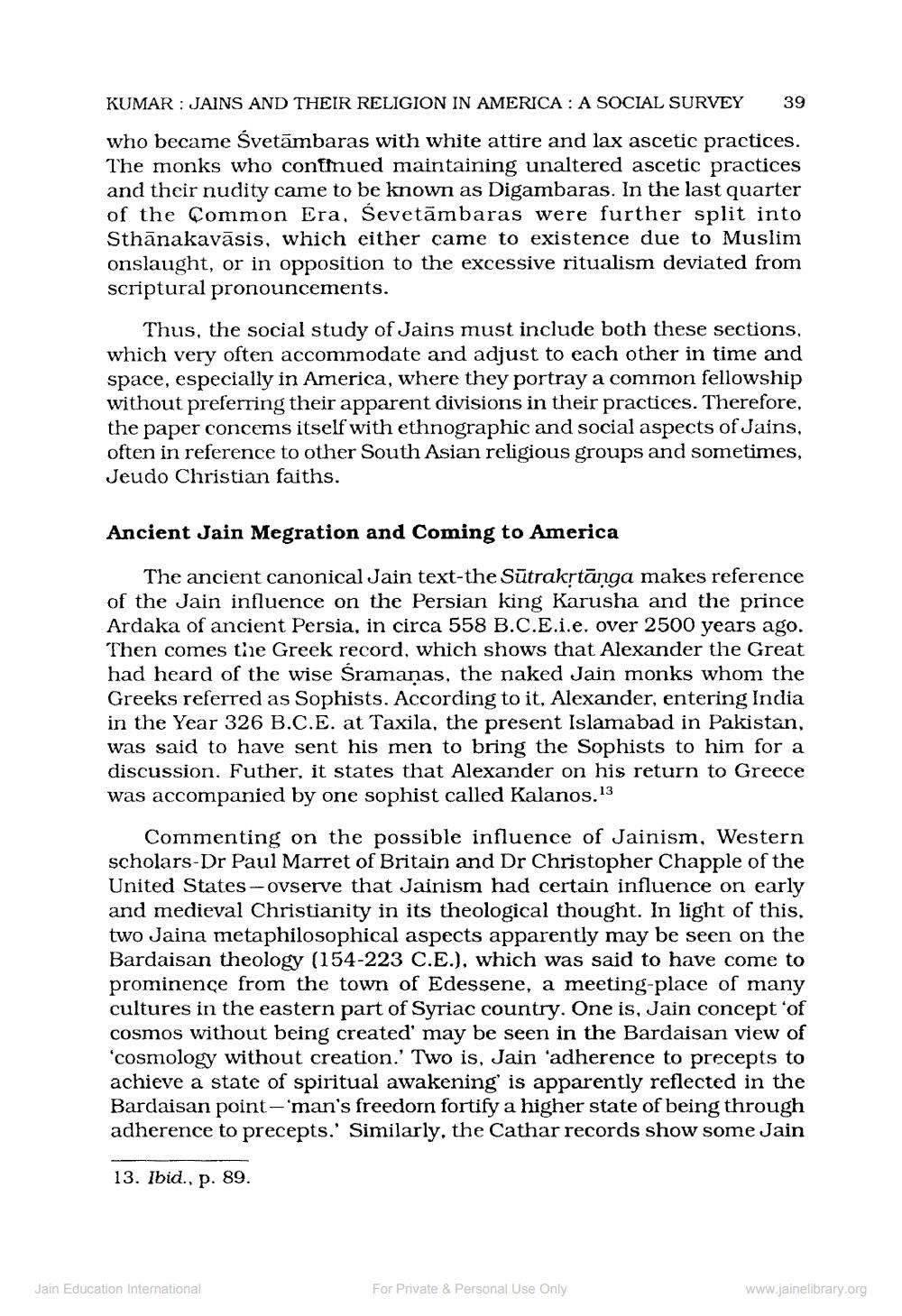________________
KUMAR JAINS AND THEIR RELIGION IN AMERICA: A SOCIAL SURVEY
who became Svetambaras with white attire and lax ascetic practices. The monks who continued maintaining unaltered ascetic practices and their nudity came to be known as Digambaras. In the last quarter of the Common Era, Ševetāmbaras were further split into Sthanakavāsis, which either came to existence due to Muslim onslaught, or in opposition to the excessive ritualism deviated from scriptural pronouncements.
39
Thus, the social study of Jains must include both these sections, which very often accommodate and adjust to each other in time and space, especially in America, where they portray a common fellowship without preferring their apparent divisions in their practices. Therefore, the paper concems itself with ethnographic and social aspects of Jains, often in reference to other South Asian religious groups and sometimes, Jeudo Christian faiths.
Ancient Jain Megration and Coming to America
The ancient canonical Jain text-the Sūtrakṛtānga makes reference of the Jain influence on the Persian king Karusha and the prince Ardaka of ancient Persia, in circa 558 B.C.E.i.e. over 2500 years ago. Then comes the Greek record, which shows that Alexander the Great had heard of the wise Śramanas, the naked Jain monks whom the Greeks referred as Sophists. According to it, Alexander, entering India in the Year 326 B.C.E. at Taxila, the present Islamabad in Pakistan, was said to have sent his men to bring the Sophists to him for a discussion. Futher, it states that Alexander on his return to Greece was accompanied by one sophist called Kalanos.13
Commenting on the possible influence of Jainism, Western scholars-Dr Paul Marret of Britain and Dr Christopher Chapple of the United States-ovserve that Jainism had certain influence on early and medieval Christianity in its theological thought. In light of this. two Jaina metaphilosophical aspects apparently may be seen on the Bardaisan theology (154-223 C.E.), which was said to have come to prominence from the town of Edessene, a meeting-place of many cultures in the eastern part of Syriac country. One is, Jain concept 'of cosmos without being created' may be seen in the Bardaisan view of 'cosmology without creation.' Two is, Jain 'adherence to precepts to achieve a state of spiritual awakening' is apparently reflected in the Bardaisan point-'man's freedorn fortify a higher state of being through adherence to precepts.' Similarly, the Cathar records show some Jain
13. Ibid., p. 89.
Jain Education International
For Private & Personal Use Only
www.jainelibrary.org




